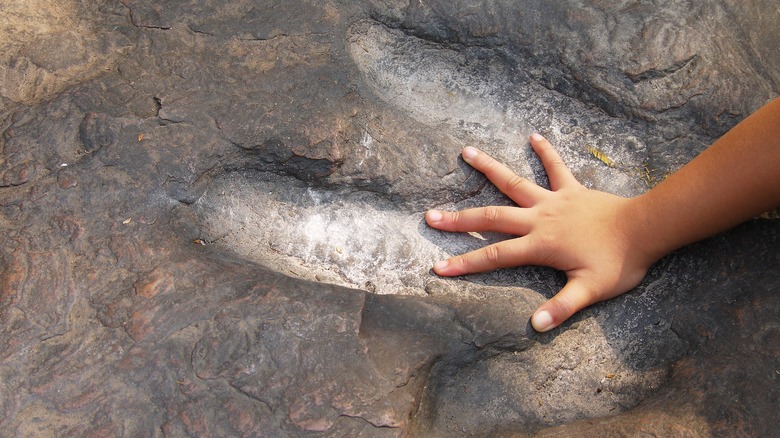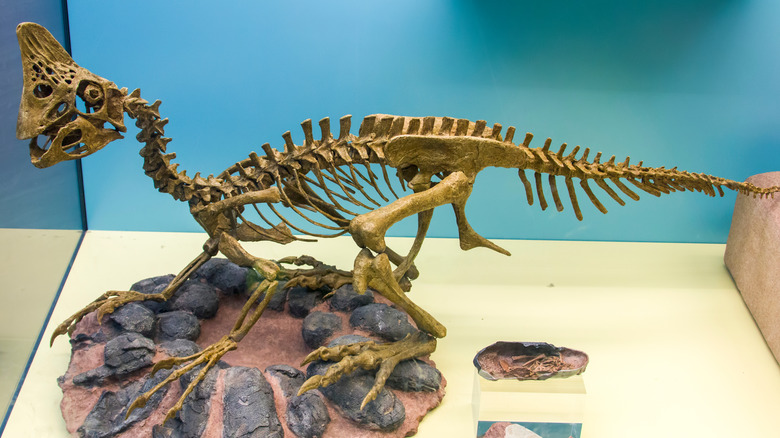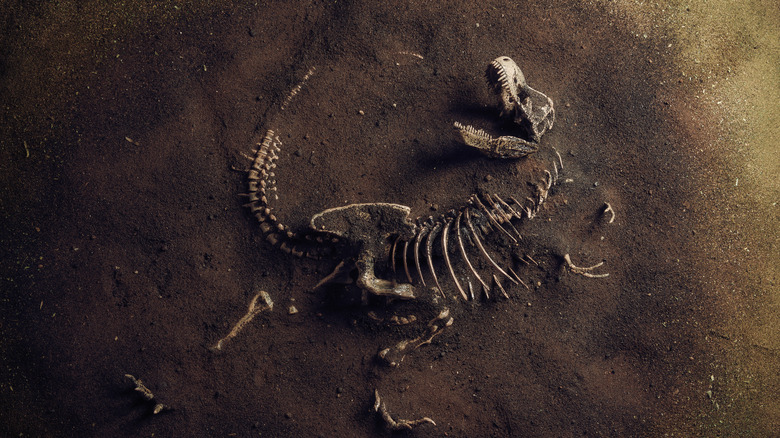How A 4-Year-Old Girl Discovered A 220 Million-Year-Old Fossil
This is the stuff "Jurassic Park" fans dream of. According to Live Science, the best places to stumble upon dinosaur fossils are in arid climates in North America, China, and as far south as Argentina. But when 4-year-old Lily Wilder was strolling on the beach in Wales with her father, she spotted a larger-than-life discovery: a huge dinosaur footprint (via NBC News).
It appears that the dinosaur stood a mere 30 inches tall and had a very long body for its size: a bizarre 8 feet long. Local paleontologists in the region suspect that the creature walked on its hind legs and attribute the species to be a type of "grallator." A grallator is a name given to any one of the varieties of a small dinosaur with three toes that walked upright (via National Park Service). Fans of the "Jurassic Park" books and films may associate this kind of tiny raptor with the Compsognathus, which a fictional little girl finds on a tropical beach (via YouTube).
However, the real Compsognathus was significantly smaller than the species Wilder found on the beach. It was about 2 feet long, similar to a chicken (via UK National History Museum). Many scientists believe dinosaurs in this category evolved into birds, with one early specimen being discovered by a 19th-century geologist named Edward Hitchcock (via Research Gate).
Lily's discovery is a roaring success
Lily and her parents were not the only ones thrilled with the discovery. As reported by WalesOnline, her mother quickly telephoned paleontologists at the National Museum in Cardiff who were stunned the little girl had stumbled upon what they deemed to be "the finest impression of a 215-million-year-old dinosaur print found in Britain in a decade."
While very excited to extract the specimen, the museum faced its own challenges. The fossil imprint was discovered technically on a private beach and therefore there was some red tape surrounding removal. It is also beneficial that the Wilder family did not try to remove the fossil themselves as such delicate findings can be harmed in the process.
Fortunately, the National Museum Cardiff was able to get approval from Natural Resources Wales (NRW), an arm of the government that strictly protects the environs of the country. The fossil is now a permanent and free exhibit at the country's national museum and is aptly called (via the National Museum Cardiff), "Lily's Fossil Footprint."
Chances of finding a dinosaur fossil
So what are your odds of stumbling upon a dinosaur fossil in the same way Lily Wilder did? First, you have to consider how difficult the process of fossilization is over millions of years, as well as your location. Anything that dies in a humid and lush environment, such as in a place like New Orleans, is unlikely to be preserved (via Scientific American). Arid climates, such as the aforementioned Glen Canyon region, are more likely to be replete with fossils. Sandstorms that swept over dinosaur remains and drying flesh made remains less appealing to predators.
If you happen to find a dinosaur on your personal property in the United States, the remains are all yours, even though paleontologists may be foaming at the mouth to get their hands on them (via Smithsonian Magazine). Don't expect to get a huge payout for the fossils, though.
In 2013, a couple in Montana found some very unique dinosaur bones on the land of their newly purchased property and offered to sell them to The Smithsonian and The Museum of Natural History who both decided the price was simply too high. The couple then turned to an auction house. Called "The Montana Dueling Dinosaurs," the specimens seem to have died entwined in an eternal battle and have their skin still preserved, which is extremely rare. They are still available for purchase from Bonhams for a cool $7 to $9 million (via Bonhams).


